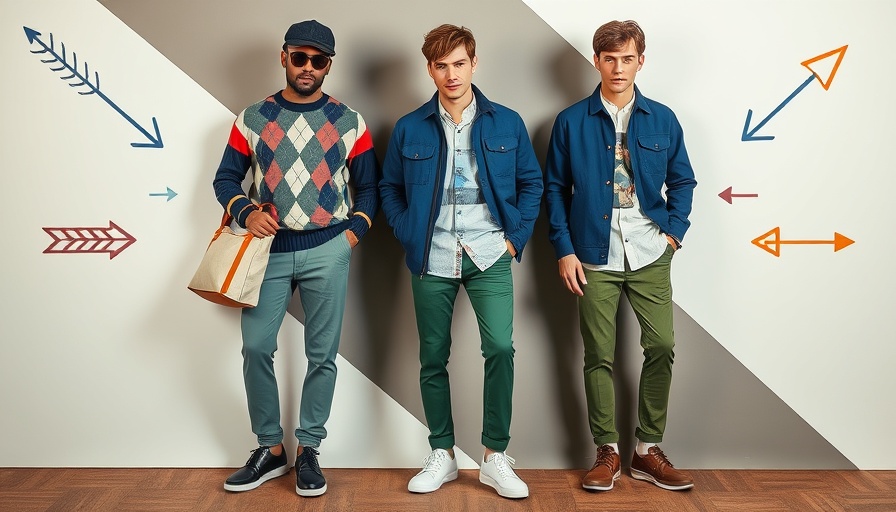
Bridging the Gap in Cosmetic Science
The world of beauty often seems glamorous, yet for many, it can be a source of deep frustration, especially for individuals with darker skin tones. The poignancy of these experiences comes to the fore through the personal story of AJ Addae, a scientist and advocate whose TEDx talk probes into the discrepancies that exist in cosmetic formulation. AJ captures the essence of this gap when she recalls the empty experience of attempting to find makeup that matched her skin tone for prom, a rite of passage that should have been joyful. This sense of exclusion is not merely anecdotal; it is reflective of systemic injustices embedded within the beauty industry and dermatology as a whole.
In 'Are cosmetics formulated for darker skin? | AJ Addae | TEDxManhattanBeach,' the discussion dives into the critical gaps in the beauty industry regarding darker skin tones, exploring key insights that sparked deeper analysis on our end.
The Science Behind Skin Tone
At the heart of this issue lies a lack of inclusivity in scientific testing and product formulation. The Fitzpatrick scale, a widely recognized method of categorizing skin types based on pigmentation and sun sensitivity, reveals glaring gaps. Initially designed with only a sliver of skin tones represented, the scale's most recent adaptation still inadequately acknowledges the spectrum of darker skin tones. As Addae points out, the cosmetic benchmarks typically prioritize lighter skin, leaving those with deeper tones to grapple with the inadequacies of products that do not account for their unique dermatological needs. It is a reminder that science, when narrowed, can unwittingly perpetuate disparities.
The Business of Inclusivity
Interestingly, this demographics-driven gap presents a market opportunity. AJ shares research indicating that addressing racial inequities in the beauty industry could represent an economic opportunity valued at a staggering $2.6 billion. The data illustrates that while Black-owned beauty brands yield significantly higher returns, they receive only a fraction of the venture capital needed to succeed. This highlights a misguided perception about the profitability of diversity in business. Companies ignoring this trend risk not only their market share but also their future relevance in an increasingly globalized economy committed to equality and innovation.
From Challenge to Change: The Role of Education and Research
Central to overcoming these challenges is education. Addae herself transitioned from working in clinical research to leading initiatives aimed at formulating products specifically for the melanin-rich consumer. This proactive approach underscores the potential of scientific discovery paired with ambition. By illustrating that darker skin tones experience different responses to skin treatment and requiring more careful experimentation, AJ champions the idea that cosmetic science needs to evolve towards inclusivity.
Future Predictions in Cosmetic Science
Adding to the urgency is the reality that embracing inclusive practices within cosmetic science will propel innovation. The need for more diverse representation in research efforts is critical. As Addae suggests, we have barely scratched the surface of understanding how cosmetic products can cater to all skin tones, a realization that invites further inquiry into the science of cosmetics. AI, biotechnology, and advanced research methodologies will play a crucial role in ensuring future formulations are equitable and effective. Not only must product efficacy be verified across skin tones, but research benefits will also emphasize social justice in the beauty industry.
Paving The Path Forward
To foster innovation in this arena, all stakeholders—scientists, industries, and consumers—must collaborate. Initiatives such as Sula Labs, which Addae has founded, aim to guide brands in implementing inclusive product testing and marketing strategies. These partnerships symbolize a growing recognition of the need for diversity in beauty, emphasizing that every individual deserves products that resonate with their unique identity.
The beauty industry is at a crossroads where addressing inclusivity is no longer just a moral imperative but also a commercial necessity. With a future powered by science, the goal is to create a world where cosmetic offerings are as diverse as the individuals they serve, empowering consumers to feel seen and represented.
As we reflect on AJ Addae's insights from her TEDx talk, it becomes clear that the marriage between cosmetic science and social consciousness is not only vital but has the potential to redefine an industry grounded in aesthetics. The change is not just desirable—it is achievable.
 Add Row
Add Row  Add
Add 




Write A Comment